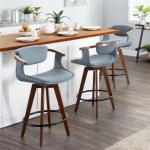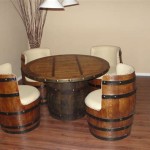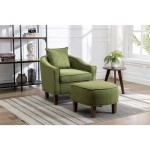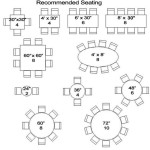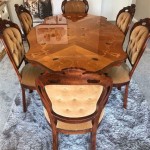Replacement Fabric For Directors Chairs: A Comprehensive Guide
Directors chairs, with their distinctive folding design and comfortable seating, are a staple in various settings, from film sets and outdoor events to homes and patios. Their portability and ease of use contribute to their enduring popularity. However, the fabric on a director's chair, often exposed to the elements and subjected to regular use, can wear out over time. Replacing the fabric is a cost-effective way to revitalize the chair, extending its lifespan and maintaining its aesthetic appeal. This article provides a comprehensive guide to understanding replacement fabric options for director's chairs, covering material types, selection criteria, and replacement procedures.
The longevity of a director's chair hinges on the durability of its components, with the fabric playing a crucial role. Faded, torn, or stained fabric detracts from the chair's appearance and compromises its comfort. Rather than discarding the entire chair, replacing the fabric offers a sustainable and economical solution. The process typically involves removing the old fabric, selecting a suitable replacement, and installing it securely. The difficulty level varies depending on the chair's design and the user's skill, but many replacements can be accomplished with basic tools and a moderate level of DIY proficiency.
Understanding Fabric Options for Director's Chairs
The market offers a wide array of fabrics suitable for replacing the seat and backrest of a director's chair. Each material possesses unique characteristics relating to durability, weather resistance, and aesthetic appeal. Understanding these attributes is crucial for making an informed decision.
Canvas: Canvas is a popular choice due to its strength, affordability, and availability. It is typically made from cotton or linen and offers a relatively smooth surface that can be easily painted or printed on. Heavier-weight canvas is particularly resistant to tearing and abrasion, making it suitable for high-traffic environments. However, untreated canvas is susceptible to water damage and fading, necessitating the application of waterproofing or UV-resistant coatings.
Polyester: Polyester is a synthetic fabric known for its exceptional durability and resistance to weathering. It resists stretching, shrinking, and fading, making it a suitable option for outdoor use. Polyester is also relatively easy to clean and maintain, often requiring just soap and water. Different polyester weaves offer varying degrees of breathability and texture, allowing for customization based on specific needs.
Acrylic: Acrylic fabric, often sold under brand names like Sunbrella, is a premium option known for its superior weather resistance and colorfastness. It is specifically designed for outdoor applications and can withstand prolonged exposure to sunlight, rain, and humidity without fading or degrading. Acrylic fabrics are typically more expensive than canvas or polyester, but their long-term performance makes them a worthwhile investment for those seeking maximum durability and longevity.
Textilene: Textilene is a woven mesh fabric made from PVC-coated polyester yarns. It is exceptionally strong and resistant to tearing, stretching, and fading. Its open weave allows for excellent breathability, making it a comfortable choice for warm weather. Textilene is commonly used in outdoor furniture due to its resistance to mold, mildew, and stains. It is also easy to clean and maintain, often requiring only a simple wipe-down.
Olefin: Olefin is a synthetic fiber known for its resistance to stains, mildew, and abrasion. It is commonly used in outdoor furniture cushions and fabrics. It is also relatively lightweight and dries quickly, making it a practical choice for director's chairs that may be exposed to rain or moisture. Olefin is also recyclable, which is a great feature for sustainability.
Beyond the core material, the fabric's weight, weave, and finish contribute to its overall performance. Heavier fabrics are generally more durable and resistant to tearing, while tighter weaves offer greater water resistance. Fabric finishes, such as water repellents or UV inhibitors, enhance the material's ability to withstand the elements.
Key Considerations When Selecting Replacement Fabric
Choosing the right replacement fabric requires careful consideration of several factors, including the intended use of the chair, environmental conditions, and desired aesthetic. Addressing these factors will ensure that the chosen fabric meets the specific needs and preferences of the user.
Durability: The durability of the fabric should align with the frequency and intensity of chair usage. For chairs used frequently or in demanding environments, such as film sets or outdoor events, selecting a heavy-duty fabric like acrylic or textilene is crucial. For chairs used primarily indoors or for occasional use, a lighter-weight canvas or polyester may suffice.
Weather Resistance: If the director's chair will be used outdoors, weather resistance is a paramount consideration. The fabric should be able to withstand exposure to sunlight, rain, and humidity without fading, degrading, or developing mold or mildew. Acrylic and textilene are particularly well-suited for outdoor applications due to their inherent resistance to these elements. Canvas and polyester can be treated with water repellents and UV inhibitors to enhance their weather resistance, but these treatments may require periodic reapplication.
Comfort: While durability and weather resistance are important, the comfort of the fabric should not be overlooked. The texture, breathability, and pliability of the fabric contribute to the overall seating experience. Canvas and polyester offer a relatively smooth surface, while textilene provides enhanced breathability. The choice should reflect personal preferences and the climate in which the chair will be used. For example, in hotter climates, a more breathable fabric like textilene might be preferable.
Aesthetic Appeal: The replacement fabric should complement the overall aesthetic of the chair and its surroundings. The market offers a wide range of colors, patterns, and textures to choose from. Consider the existing furniture, the décor of the space, and personal preferences when selecting a fabric. Solid colors offer a classic and versatile look, while patterns can add visual interest and personality. It is also important to ensure that the chosen fabric is colorfast to prevent fading or bleeding.
Cost: The cost of replacement fabric varies depending on the material, weight, and finish. Canvas and polyester are typically the most affordable options, while acrylic and textilene tend to be more expensive. Consider the budget and the desired level of performance when making a selection. While investing in a higher-quality fabric may initially seem more expensive, its increased durability and longevity can ultimately save money in the long run by reducing the need for frequent replacements.
Step-by-Step Guide to Replacing Director's Chair Fabric
Replacing the fabric on a director's chair is a straightforward process that can be accomplished with basic tools and a moderate level of DIY proficiency. The following steps provide a general guide, but specific instructions may vary depending on the chair's design.
Preparation: Gather the necessary tools and materials, including the replacement fabric, a seam ripper or scissors, a measuring tape, a pencil or marker, a sewing machine (optional, but recommended for a professional finish), thread, and upholstery staples (if applicable). It is also beneficial to refer to any available instructions or diagrams specific to the chair model.
Removing the Old Fabric: Carefully remove the old fabric from the chair, paying attention to how it is attached. Most director's chairs use rivets, staples, or sewn seams to secure the fabric. Use a seam ripper to carefully detach any sewn seams. If the fabric is attached with staples, use a staple remover or flathead screwdriver to pry them out. If it’s attached by rivets, use a drill bit to remove the rivets. Preserve the old fabric as a template for cutting the new fabric.
Measuring and Cutting the New Fabric: Lay the old fabric flat on a clean surface and use it as a template to measure and cut the new fabric. Add an extra inch or two of fabric around the edges for seam allowance or to provide flexibility during installation. Ensure that the grain of the fabric runs in the desired direction to maintain its structural integrity.
Sewing (Optional): If desired, sew the edges of the new fabric to create a clean and professional finish. A simple hem or overlock stitch will prevent fraying and enhance the fabric's durability. This step is particularly recommended for fabrics like canvas that are prone to unraveling.
Attaching the New Fabric: Attach the new fabric to the chair frame using the same method as the original fabric. If the fabric was originally sewn, use a sewing machine to sew the new fabric in place. If it was attached with staples, use an upholstery stapler to secure the fabric to the frame. Ensure that the fabric is taut and wrinkle-free. If it was attached by rivets, you may need to replace the rivets or use alternative methods for securing the fabric. For example, replace rivets with nuts and bolts.
Final Touches: Double-check that the fabric is securely attached and that all seams are properly finished. Trim any excess fabric and remove any loose threads. Inspect the chair for any other worn or damaged components and address them as needed. Clean the chair frame with a mild detergent and water to remove any dirt or grime.
By following these steps, individuals can effectively and affordably restore their director's chairs, extending their lifespan and enjoying their comfort and functionality for years to come. The careful selection of replacement fabric, coupled with proper installation techniques, ensures a successful and aesthetically pleasing outcome.

Director Chair Seat Replacement Canvas Cover Grey Blue Kit Excluding Chairs

Flat Stick Director S Chair Seat And Back Set Natural The Store

Everywhere Chair Canvas Replacement Cover Set For Directors Round Stick Etsy

Round Stick Director S Chair Cover Set The Store

Canvas Chair Covers Sou Wester Lattice Makers

Casual Home Tan Director Chair Replacement Canvas 021 24 The

Phifertex Plus Mesh Replacement Cover Set For Directors Chair Flat Stick Vinyl Fabric Etsy

Sky Blue And White Directors Chair Covers Replacement Director The Stripes Company

Replacement Director Chair Covers Fawn Terracotta Turquoise Stripe The Stripes Company

Casual Home Tan Director Chair Replacement Canvas 021 24 The
